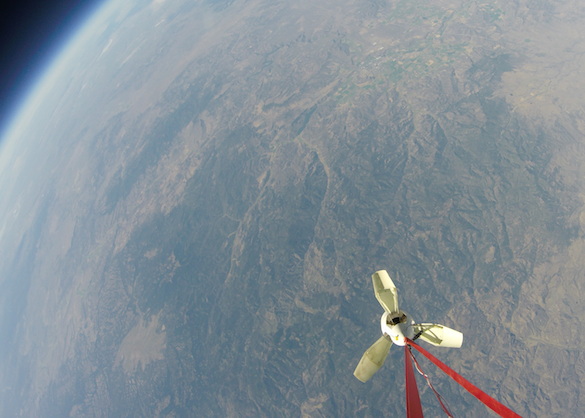Deployable Rigid Adjustable Guided Final Landing Approach Pinions (DRAG FLAPs)
PI: Joey Oberholtzer, Masten Space Systems Inc.
PI: Joey Oberholtzer, Masten Space Systems Inc.

- TA05 Communication and Navigation
- TA09 Entry, Descent and Landing Systems
Deployable, controllable, rigid decelerators have broad applicability to the aerospace industry. DRAG FLAPs are specifically designed for use during descent and landing of an entry, descent, and landing (EDL) trajectory to augment the aerodynamic characteristics of a vehicle. Employing such devices provides aerodynamic stabilization and control, expands the descent time frame to accomplish critical events, improves precision landing, and increases the payload mass to surface. To make this concept useful to multiple customers in NASA and the commercial industry, several advancements are necessary. It needs to be refined for supersonic deployment, made actively guidable, and proven in a relevant environment.
Masten’s development of the flap system is ongoing and the current Technology Readiness Level is 4. The first test is intended to prove the scale model’s functionality. Upon completing the first test, both the hardware and software elements of the technology will be proven in a relevant environment and the TRL is raised to 5. The second test is intended to demonstrate active guidance of the scale model. Upon completing the second test, the TRL is raised to 6.
The industry can harness the benefits for use in emerging reusable spacecraft, planetary science missions, and sample return capsules from the International Space Station. The primary benefit to NASA is the opportunity to gain valuable data for a radically different approach to descent for EDL trajectories. Precision landing remains one of the top ten technical challenges facing the agency.
The tests are intended to prove the scale model’s functionality (Flight Test 1), as well as demonstrate active guidance of the scale model (Flight Test 2).
The hardware components shown below display a full-sized composite flap test article and the associated actuation system. The flap is controlled by brushless motors and a breadboard motor controller is built and tested.

Technology Details
-
Selection DateAFO5 (Jan 2013)
-
Program StatusCompleted
- 1 Balloon
Development Team
-
PIJoey Oberholtzer
-
Organization
-
SponsorMasten Space Systems Inc.
-
More Information

